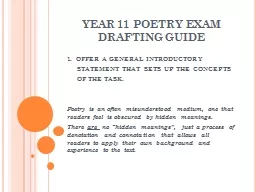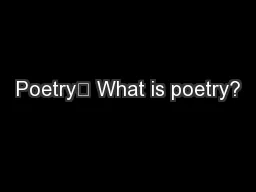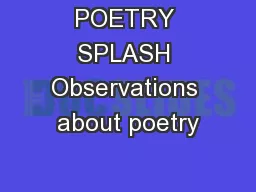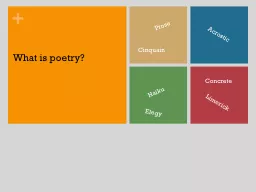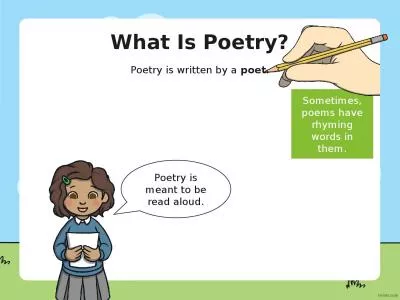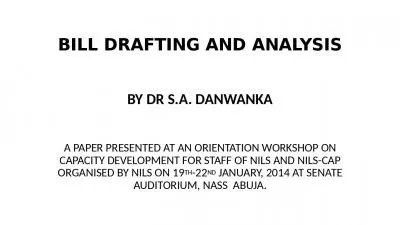PPT-YEAR 11 POETRY EXAM DRAFTING GUIDE
Author : min-jolicoeur | Published Date : 2018-10-30
1 OFFER A GENERAL INTRODUCTORY STATEMENT THAT SETS UP THE CONCEPTS OF THE TASK Poetry is an often misunderstood medium one that readers feel is obscured by hidden
Presentation Embed Code
Download Presentation
Download Presentation The PPT/PDF document "YEAR 11 POETRY EXAM DRAFTING GUIDE" is the property of its rightful owner. Permission is granted to download and print the materials on this website for personal, non-commercial use only, and to display it on your personal computer provided you do not modify the materials and that you retain all copyright notices contained in the materials. By downloading content from our website, you accept the terms of this agreement.
YEAR 11 POETRY EXAM DRAFTING GUIDE: Transcript
Download Rules Of Document
"YEAR 11 POETRY EXAM DRAFTING GUIDE"The content belongs to its owner. You may download and print it for personal use, without modification, and keep all copyright notices. By downloading, you agree to these terms.
Related Documents

